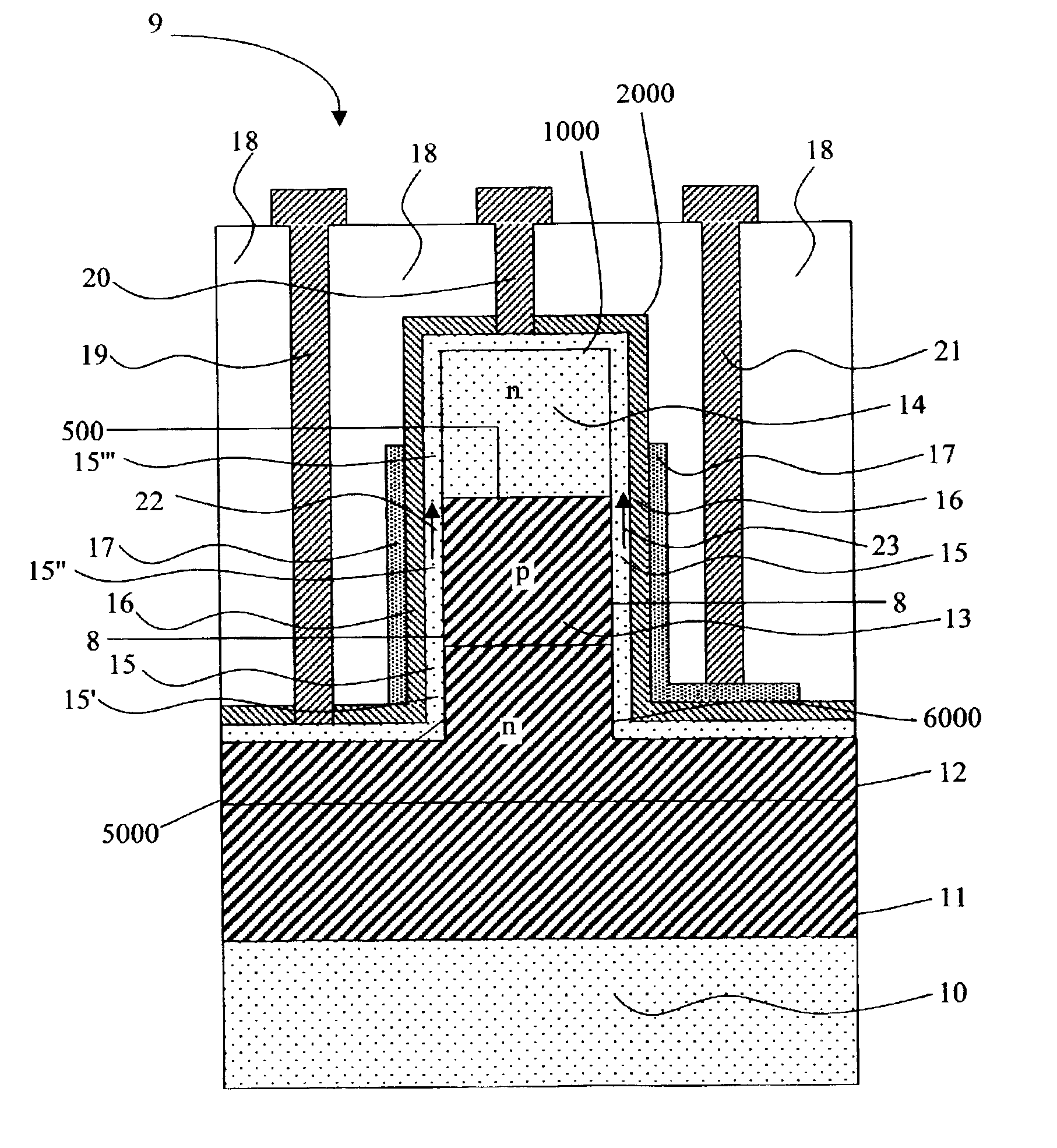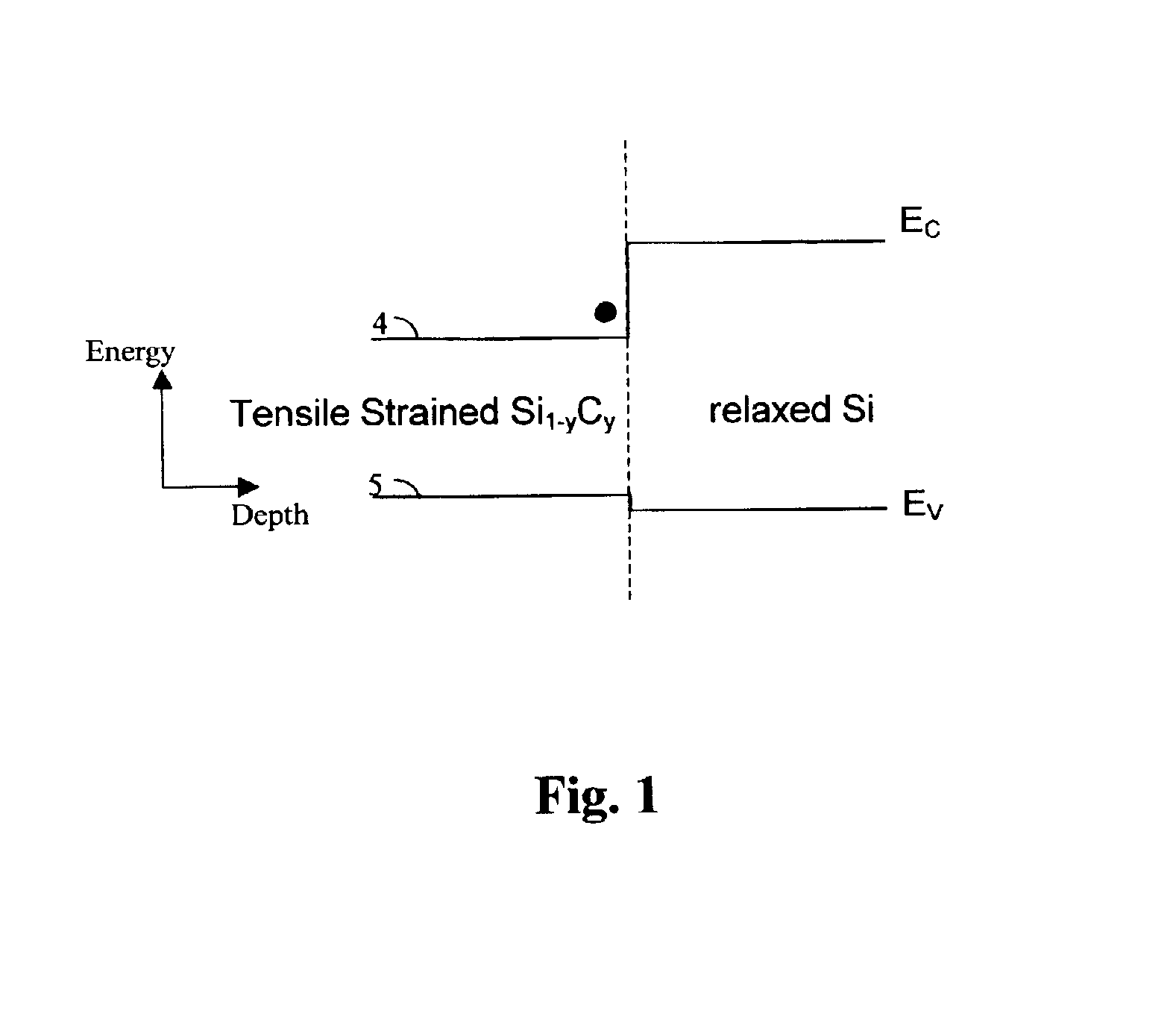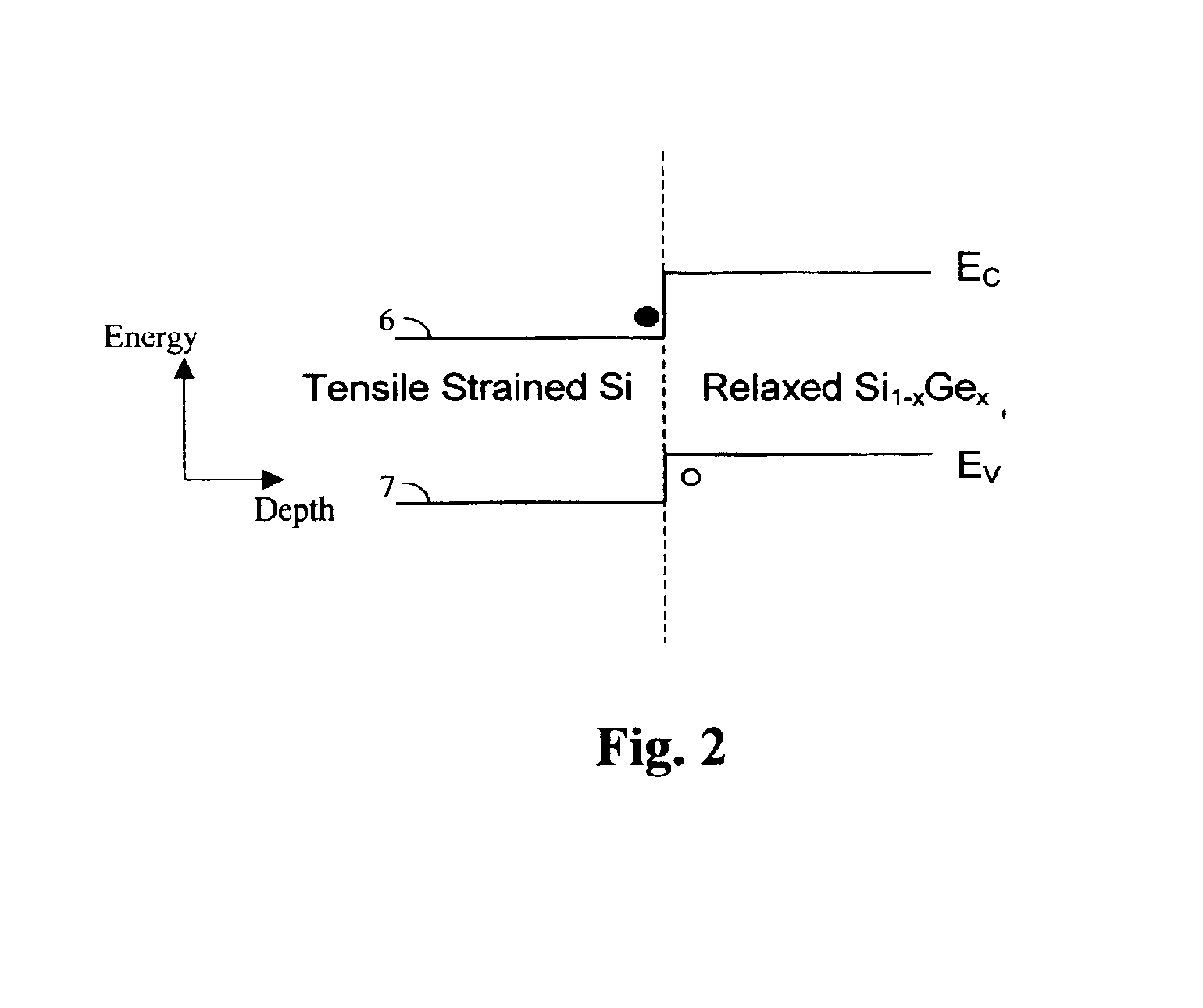Ultra scalable high speed heterojunction vertical n-channel MISFETs and methods thereof
a heterojunction, n-channel technology, applied in the field of metal insulator semiconductor field effect transistors, can solve the problems of difficult to achieve abrupt doping profiles, traditional techniques fail to reduce certain undesirable physical effects, and the scaling of silicon mosfets has become a major challenge, so as to achieve superb performance and scalability, optimize drive current and leakage current, and avoid tradeoffs in conventional si technology.
- Summary
- Abstract
- Description
- Claims
- Application Information
AI Technical Summary
Benefits of technology
Problems solved by technology
Method used
Image
Examples
first embodiment
[0029]FIGS. 3 shows a top view of a vertical device structure disclosed in this invention. FIG. 4 shows a cross-sectional view of the It is a SiGe based vertical nMOSFET 9 comprising a vertical mesa, a column, a pedestal, a pillar or a fin comprising several layers, such as a source layer 14, a body layer 13, and a drain layer 12, with a channel layer 15, an insulator layer 16, and a gate electrode layer 17 on the sidewalls of the mesa, column, pedestal, pillar or fin, which may be formed by etching layers 14, 13, and 12. The device has the following structural characteristics:[0030]1) The drain is n+-type relaxed SiGe 12;[0031]2) The body is epitaxial p-type relaxed SiGe 13, and the doping level is adjusted to achieve the desirable threshold voltage;[0032]3) The source is epitaxial n+-type tensile strained Si 14;[0033]4) The channel is epitaxial tensile strained Si 15, and there is no hetero-barrier along the current flow direction shown by arrows 22 and 23. The channel layer 15 f...
fourth embodiment
[0041]In order to circumvent this problem, another hetero-material system may be used for nMOSFETs. Tensile strained Si1−x−yGexCy on silicon also has the desired conduction band offset, and in this case it does not require a relaxed SiGe virtual substrate. The cross sectional schematic of the fourth embodiment is shown in FIG. 7 for such a vertical surface channel device 60. The device has the following structure characteristics:[0042]1) The drain is n+-type silicon 62;[0043]2) The body is p-type silicon 63, and the doping level is adjusted to achieve desirable threshold voltage;[0044]3) The source is n+-type tensile strained Si1−x−yGexCy 64;[0045]4) The channel is silicon or strained Si1−a−bGeaCb 65, and there is no hetero-barrier along the current flow direction shown by arrows 72 and 73;[0046]5) A strained Si1−x−yGexCy / Si heterojunction is formed between the source and the body at the interface 600, and preferably, aligned with the source / body metallurgical p / n junction;[0047]6) ...
PUM
 Login to View More
Login to View More Abstract
Description
Claims
Application Information
 Login to View More
Login to View More - R&D
- Intellectual Property
- Life Sciences
- Materials
- Tech Scout
- Unparalleled Data Quality
- Higher Quality Content
- 60% Fewer Hallucinations
Browse by: Latest US Patents, China's latest patents, Technical Efficacy Thesaurus, Application Domain, Technology Topic, Popular Technical Reports.
© 2025 PatSnap. All rights reserved.Legal|Privacy policy|Modern Slavery Act Transparency Statement|Sitemap|About US| Contact US: help@patsnap.com



